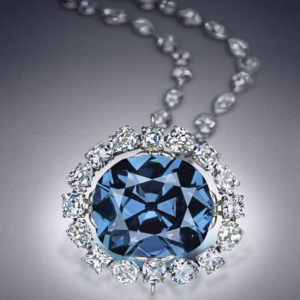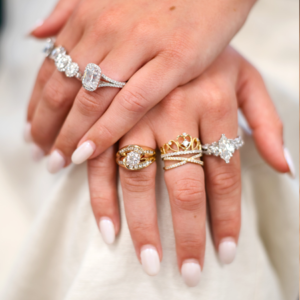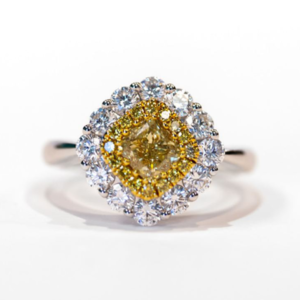
There is a mystique about diamonds that is unique from any other investment in the world. The combinations of a natural diamond including rarity, desirability, and allure distinguishes diamonds as a true treasure of the ages. Diamonds are the most precious stone that is extracted from the earth.
Diamonds hold many properties that make them, in my humble opinion, the queen of gems.
Kingdoms have been plundered in lieu of this coveted gem. Diamonds are not only a concentrated form of wealth, but they are easily portable. Since diamonds, refract light and produce flashes of color, better than any other natural gem, it’s no wonder they are so desired.
In addition, three of diamonds greatest assets are beauty, romantic history, and mystery. Those three qualities
combined have made diamonds the most sought after gemstone in history.
Over time several diamonds have become famous due to their alluring size and charm.
The Koh-i-Noor is perhaps the most notable of all diamonds; its name means “mountain of light”. This 108.93 carat diamond is believed to have been part of the famous Peacock Throne made for Shah Jehan. Throughout history, the Koh-i-Noor has been owned by many people and is currently on display with the Crown Jewels in the Tower of London.

The Hope Diamond is also very distinguished. It is most associated with bringing bad luck to its owner. While owning the 67.5 carat natural blue diamond, people have been known to go broke, lose loved ones, and die. Harry Winston, the famous New York diamond merchant, bought the famous blue diamond in 1949. After
many clients refused to touch the stone, he put it on display for all to see in the Harry Winston Gallery at the Natural Museum of History in Washington DC. As of today, the Hope diamond is one of the most favorite object in the Smithsonian collections.
Minerals were among the first medicinal substances found to help treat and prevent health issues. During the Middle Ages diamonds were thought to have healing power. Since only the elite possessed diamonds, it was easy to credit them with the most astonishing powers.
For a couple of decades, it became a common practice for members of royalty to ingest diamond dust in hope that it would neutralize any poisons administered by their enemies. These rulers would sprinkle diamond dust over their food, just as we sprinkle salt. Unfortunately, this method didn’t actually help one’s well being.
Catherine de’ Medici used it in her favor however. She was known to use diamond dust to eliminate certain
people who acted against her. Catherine’s enemies called the potent mixture she concocted, “the powder of succession”.
Diamonds have been thought to hold many other powers as well. For example, if taken to bed and warmed by the body, the diamond would heal skin sores. If placed on the head of a lunatic or one believed to possess demonic traits, the diamond had the power to draw out the evil forces.
They were also supposed to impart virtue, generosity, and courage during battle. If worn on a shield in battle, the diamond would break an enemy’s sword.
For over a thousand years, diamonds were reserved for kings alone. Women, whether princesses or commoners, were expressly forbidden to wear the splendid jewel.
Saint Louis thought the only woman worthy of wearing diamonds was the Holy Virgin herself.
In the middle 1400’s, Agnes Sorel violated the Sumptuary Law. She was the mistress of King Charles VII and because she adored jewels, the rule was disregarded. Miss Sorel, a commoner, started a revolution in the fifteenth century that has continued to this day.
In 1477, the diamond engagement ring tradition began.

Emperor Maximilian presented Mary of Burgundy with a diamond ring to seal their marriage vows. He chose the third finger on the left hand because he thought the finger was connected to the heart through the vein of love. After this tradition began, diamonds became more common among royalty. From then on, without completely eclipsing the other precious stones, diamonds became the most cherished items in the royal treasuries.
Each royal court wanted to outdo its rivals in luxury, and between royalty and their personal jewelers, kingdoms devised the most extravagant designs to date.
In the seventeenth century, Louis XIV had a great passion for gems and jewelry. The Sun King had a grand display of courtly magnificence. To explain his splendor, a historian, Bernard Morel, author of The French Crown Jewels, once said, “the diamonds and precious stones belonging to the French crown became worthy of Versailles.”
he eighteenth century, more than any other time so far, was the age of jewelry. Diamonds flashed their magic in the daylight and yet still delighted in the dim candle light of the royal chambers. Jewelry marched side by side with fashion. Diamonds appeared on sword hilts, chivalric emblems, snuffboxes, coat buttons, watches, and medallions.
Many people feel the grand prize winner of opulence was Catherine the Great as Russia’s court of jewels surpassed all others. Her taste was much more extravagant than most. Many historians have agreed that next to King Louis XIV, she won the contest of the “biggest and best” display of jewels throughout history.
Diamonds became a part of reality in the nineteenth century. The coveted gem used to be something you only heard about. Now people could actually read about diamonds and view the brilliance they embody through paintings. English writers such as Shakespeare translated Diamonds into language. He used indirect ways like metaphor, symbol, and personification to describe their dramatic rare beauty.
Diamonds were so unique in England that even Shakespeare had to learn about them through reference work. Mostly he would refer to diamonds through metaphors of the ideal woman. The Shakespearean woman required virtue, beauty, wisdom, fidelity, and chastity to even start to compare to a diamond. Victorian novelists and writers began to give diamonds starring roles, regarding diamonds with supernatural entities, both divine and
demonic. English writers would employ diamonds to dramatize some of the most urgent concerns during this time period. In their books, the writers used the gem to express the power that the British Empire still exercised over India and South Africa. By using diamonds in this way, English writers gave them a symbolic value that far surpassed their monetary worth and even their physical beauty.

Diamonds were often displayed to celebrate national holidays and anniversaries in the nineteenth century.
Queen Victoria marked her fiftieth year of her reign with a Diamond Jubilee. The general public became more intrigued than ever with diamonds.
Although scientists had begun to understand the chemistry and geology of diamonds, legends attributing their origin to substances continued to grab popular imagination.
The Greek philosopher, Plato once wrote his opinion about diamonds. He thought they were living beings that descended from the stars. This conception of diamonds was entertained as truth for nearly 2,000 years. Other philosophers divided precious stones into male and female specimens, and even claimed that they could “marry” and reproduce. In addition to this idea, people believed many other legends of how diamonds originated. Some of the legends include diamond being volcanic lava, frozen rainwater, petrified wood, and even “masses of meteoric nature.”
Throughout history, the majority of people felt diamonds were a gift from the heavens.
Until recent times, jewelry hadn’t reached its full splendor. Although some gemstones owe much of their effect to their natural coloration, the beauty of diamond is primarily its lack of color and is largely dependent on how skillfully it is cut. The skill of cutting a diamond wasn’t perfected until the later century.
Diamonds that are lucky enough to be cut by a skilled cutter outshine a poorly cut diamond like the sun’s dazzling glimmer in comparison to the pale light of the moon. When an exquisitely cut diamond is set into
jewelry, the piece goes from average to “take your breath away” beautiful.
In the twentieth century, diamonds began to steal the stage in motion pictures. Over the big screen, diamonds were enabled to convey their dynamic shimmer. Producers adorned their leading ladies such as Mae West, Elizabeth Taylor, Grace Kelly, and Marilyn Monroe in diamonds. It has been said that diamonds and Hollywood movies are made for each other.
Diamonds are one of the ingredients that Hollywood loves to present. In one word, diamonds add desire.
Beginning in the early 1900’s, breathtaking diamond necklaces, rings, cuffs, brooches, clips, earrings, and hair ornaments became regular accessories in the movies. The prestige and glamour surrounding the dazzling dancing gems and their merchants were carefully cultivated. Names like Cartier, Tiffany, and Van Cleef & Arpel became well recognized in America. With the help of educated jewelers, no longer we’re diamonds dictated to aristocracy; diamonds are no longer the sole wealth of the elite.
It is incredible to think that something so rare, so difficult to find as diamonds, is possessed by nearly every family in America.
Even though diamonds have so many admirers, they still remain unique. For it is through the diamond that jewelry has found its true spirit and achieved its most exquisite effects.
Mined diamonds are a great example of nature’s finest display of beauty. Now that laboratory grown diamonds have come to the stage, they rival natural diamonds for their beauty, but are far less rare.
Sullivan’s Jewelers is honored to sell both natural and lab grown diamonds. It is up to people to create the beauty that can be captured by the essence of this unique and mystical gemstone. The allure diamonds hold will always remain because of the scintillating rainbow flashes of sparkle that simply has the power to take your breath away!
